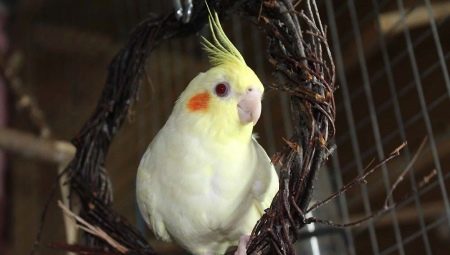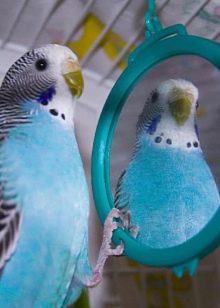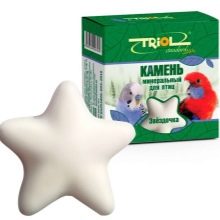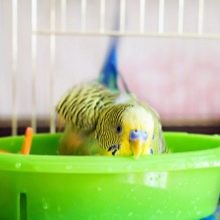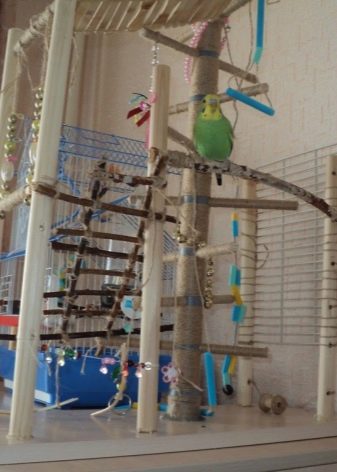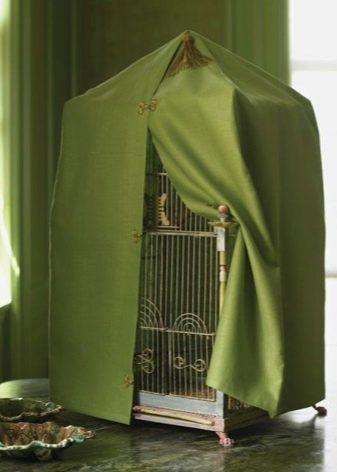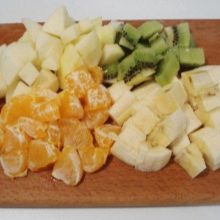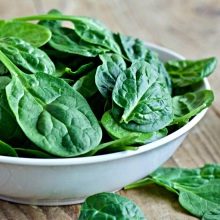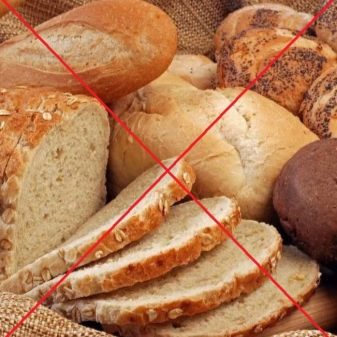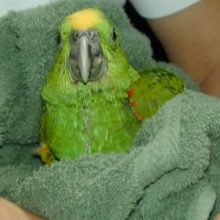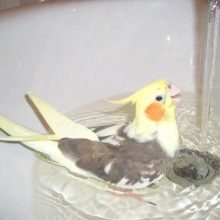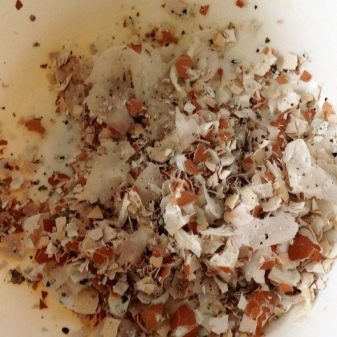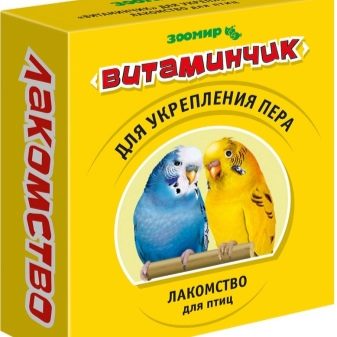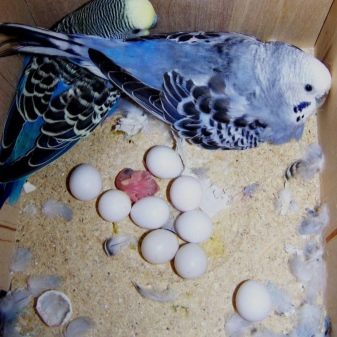One of the popular pets are parrots. Their content does not require much time and money. They are located in a spacious cage, the best walk for parrots - flying around the room. However, there are several rules of care that you need to know in order for your bird to stay healthy for a long time and make you happy.
Fundamental rules
Before buying a feathered friend, be sure to familiarize yourself with how to care for him.
- Buy a spacious cage and install it at the level of your eyes. Equip it with several perches, a water bowl, two feeders. You can put the river sand or egg shells, which helps the digestion of birds.
- Remember that the bird house must be protected from drafts. The optimal temperature of the content ranges from +18 to +25 C, do not place the cage near the heating devices. Humidity will suit 45-70%. There must be sufficient illumination with natural or artificial light.
- The current cage cleaning is done daily. At the same time, they remove litter, husk from the grains, change the water in the drinking bowl. General cleaning can be done once a month. Wipe all the bars of the cage, perches with a cloth dipped in chamomile infusion. About once every 3 months, treat the cell with infusion of soda (100 g per 1 liter of water).
- Parrots don't like loud noisesso do not listen to music or TV at full volume. Also reduce the overall noise level, do not collect large companies at home. The feathered friend will be a long time getting used to you and the decor in the house. Do not take the bird in the hands of the first time.
- Parrots love to fly. Give them that opportunity after the adaptation period. To do this, close all the windows in the room and shut them up, as the birds crash into the glazed openings. Leave your pet as soon as he goes and wants to eat, he will return to the cage.
- If your feathered friend is bored, hang a mirror next to his perch. Then he will think that the female is next to him and will start cooing with her reflection.
Required items
The essentials that will allow you to properly keep a pet include cage, roost, grain feed, feeding trough, and feeding. All this should be you before buying a pet. Pay attention to the choice of feed. It should consist of high-quality components, the use of expired or mold-infected grains is unacceptable.
It is also important to monitor the quality of water, it is unacceptable that it was chlorinated. Do not use tap water. Better if it is bottled. To care for the beak will need mineral stone. To bathe your pet, purchase a special bath for it. For the joy of a parrot, purchase toys and cage items:
- ladders;
- rings;
- bell;
- swing.
Also there are whole game complexes for birds, which are located in the room. You can either purchase them or make them yourself from scrap materials. You need paper to keep the cage clean. Buy a package of the cheapest paper, lay it on the bottom of the cage. After contamination, change to a new sheet.
On the recommendation of the owners for this purpose, you can also use paper towels. But the newspaper should not be taken because of the printing ink. If she gets inside, your feathered friend will be fine.
Parrots are guided by the sun. If it has risen, then their day begins.
If this does not suit you, cover the cage at night with a dense veil, and when lifting just remove it. This will help save your sleep.
What to feed?
We have already found out that for feathered pets in the pet store you will find a special grain feed. Once again we remind you to pay attention to the integrity of the packaging and shelf life. Since good food - the guarantee of health of your pet. Fried, spicy, salty food is contraindicated for parrots, so it is undesirable to treat them from your table. There are several ways to diversify your friend's menu.
- Fruits. There is an opinion that parrots do not like them. However, before claiming it, you should still offer a useful delicacy to your friend. Fruits should be exceptionally fresh, pre-washed, peeled and cut into small pieces. Please note that parrots can not be fruits of persimmon, mango, avocado and papaya. Other fruits can be subject to good tolerability.
- Vegetables. It is not recommended to give parrots onions, celery, radishes and radishes. Perfectly suitable carrots, cucumbers, different types of cabbage, peppers, corn, peas, tomatoes. Vegetables should be fresh, clean, cut into small pieces.
- Greenery. Parrots do not tolerate fragrant herbs, so limit in the diet cilantro, celery and dill. Let's get a little green every day. Use beet tops, various lettuce leaves, clover, plantain, spinach, burdock, meadow grasses. Natural foliage will enrich the diet of your pet and nourishes it with vitamin C.
- Birds all gnaw. To satisfy these reflexes, it is recommended to give them various branches. Lime and maple branches, as well as willow, cherry, alder, ash, currant, pear - all this will suit your pet. There are also some home plants that will fall in love with a parrot: bamboo, kalanchoe, palm, hibiscus, citrus trees. It is forbidden to give acacia, lilac, oak, bird cherry, poplar and elderberry.
Before you offer your favorite treat, soak the branches in cool water for 5-6 hours, then rinse them thoroughly and pour over boiling water.
Remember that some products can harm your pet:
- salt;
- milk;
- chocolate;
- bread.
How to wash?
The problem of bathing acutely confronts the owner of the parrot, if the feathered does not like to wash. It would seem that this is not required. But not everything is so simple. As the bird flies through all the rooms, once soiled it will spread the dirt throughout the house. Let's consider the successful bathing instructions.
- If the pet does not like being touched, then it is best to wrap it with a towel.
- Then fix the head. To do this, hold the body, take the bird under the cheeks.
- The lighting in the bathroom should not be too bright. Use dim lights.
- If heavily soiled, use a soap solution. It should be applied with light massaging movements in the direction of growth of feathers. Strictly ensure that the soap does not fall into the eyes and beak.
- Use natural methods for drying. Do not use hair dryers or heaters.
For lovers of water procedures, bathing is much easier. Type in a suitable water tank at room temperature, and your pet will do everything himself.
Some species love running water. Then adjust the temperature of the water and give free rein.
Useful recommendations
When keeping parrots at home, they must be fed with vitamins and minerals. Vitamins are needed in spring and autumn, as well as in diseases and during the molting period. In veterinary pharmacies you can find ready-made mixes for parrots.
If you want to use natural substances, you can add lemon juice or honey in small amounts to the bowl. About 3-4 drops per 100 ml of water. Minerals are essential for strong bones, feathers and beaks.
Feed your pet crushed eggshell or chalk about once a month, and then he will feel good and will delight you for a long time.
Training
Most often, parrot owners wonder if their pet can talk. It is possible to teach speech of any parrot.
- The learning process should produce a man whom the birds are not afraid.
- Start with simple phrases, for example, with the name of a pet.
- Your intonation should be soft, and the mood is benevolent. Be patient, it will take you from 2 months to six months for the pet to speak.
- Remember that you can teach speech only if your parrot lives alone. When he learns to talk, feel free to buy him a friend.
Breeding
Parrots willingly breed in captivity. For this, the birds should enjoy each other. If the male begins to show his attention to the female, be prepared for the appearance of chicks. Be sure to buy a house for hatching eggs. In laying can be from 8 to 10 eggs. The female blows them down every other day by 1-2, after which it begins to hatch.
After 18-21 days the first chick will hatch, his brothers and sisters will appear after him. Most often, parrots bring offspring in the winter.
How to care for parrots, see the next video.
